If the prospect of packing for Europe long-term has you overwhelmed, don’t worry: you need far less than you think.
I’ve spent a cumulative 10 months of my life backpacking through Europe with nothing more than a 45L carry-on size bag that escapes even the eagle eyes of budget airlines.
You don’t need to pack for Europe like you are leaving for good — trust me, you can find almost everything you’ll need abroad (and I’ll tell you what is annoying to find in Europe so you can be sure to pack it before you leave)
This backpacking Europe packing list is for all my fellow minimalists, though keep in mind that this packing list is made with ladies in mind. So if it offends your sensibilities to see menstrual cups and pretty dresses on the list, make like a Beyonce reject and step to the left.
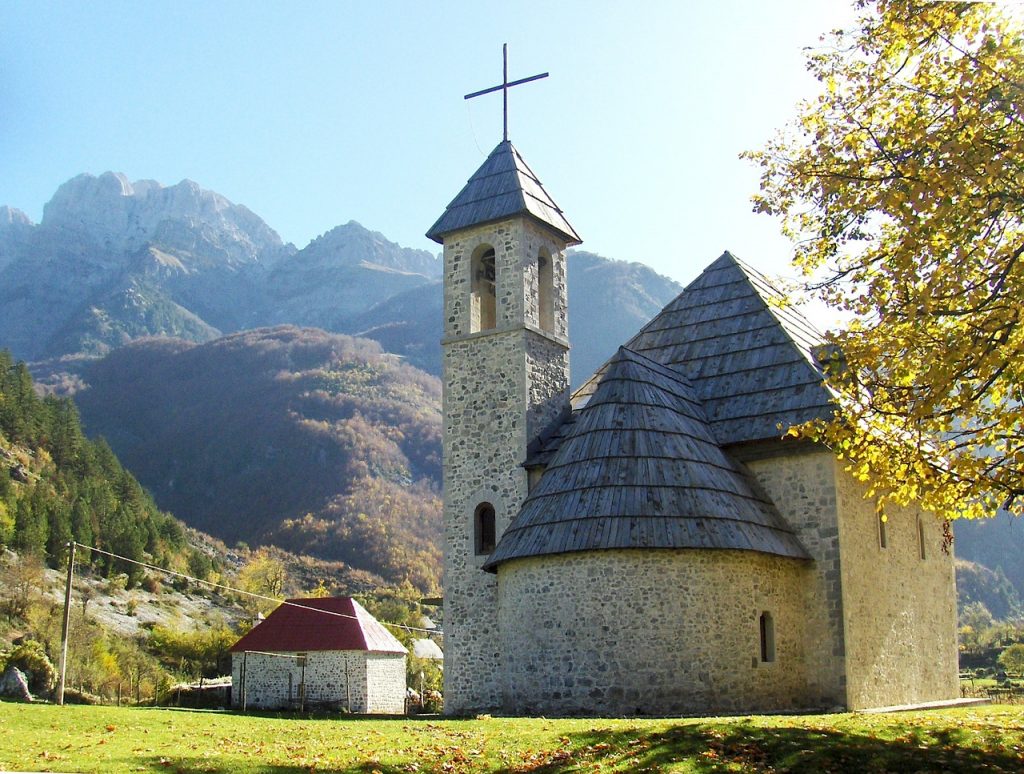
Here’s everything you need to know about what to pack for a Europe backpacking trip!
What to Pack Everything In
Take it from someone who’s been traveling for the better part of the last two years: you want to bring as small as you can and make it as organized as humanly possible. Having a well-organized system for packing all your stuff means less frustration, less time spent unpacking and repacking, and far less cursing as you wonder where the hell your phone charger is (again).
Unless you are really embracing slow travel, it is inevitable that you will pack and repack your bag once every 2 or 3 days. Having a system makes the process so much less of a pain, and you will be grateful for it by the end of even your second week backpacking Europe. This boils down to two simple things: a small but easy-to-organize travel backpack optimized for city travel (I love my 45 L carry-on Tortuga Setout backpack – more on this later) plus packing cubes and various bags to organize toiletries and other necessities. This packing list includes a few of the things that I swear by when it comes to organizing my bag as I promise it’ll save you some serious sanity points.

- Travel Backpack (I strongly recommend a carry-on size bag to save money while flying, but you can also pick a check-in size backpack): While rolling suitcases are great for short term travel in Europe, backpacking through Europe is another story. You’ll be taking a lot of public transportation, going up and down many stairs, and walking to and from many train stations. The cobblestone that looked so pretty in all the photos is really just hell on earth with a rolling suitcase. While infrastructure is generally good in Europe, trust me – you will be annoyed by having a rolling suitcase if you bring one. I am a light packer, so my Tortuga Backpack does the trick perfectly — I spent two 5 month trips through Europe with it that spanned various seasons, and I never found that I didn’t have enough space.
- Why do I recommend Tortuga so much? Here’s why: this bag is 45L and has got three main compartments: one for a laptop and other flat objects, one giant rectangular compartment perfect for packing cubes stuffed with clothing, and one smaller compartment with pockets for passports, pens, odds and ends, etc. that I stash all my extras in – plus one small outer zipper pocket for anything you want quick access to. It also has a water bottle holder on the outside as well as buckles so that you can strap something like a yoga mat to the outside. Plus, it’s quite comfortable to wear, with a padded hip belt and comfort-molding shoulder straps complete with a chest strap so that you can distribute weight perfectly across your body in the event that you need to wear your backpack for longer than usual. Check out more specs and details here.
- Does it pass budget airline requirements? I’ve never once had to check it in on a budget airline flight, and I’ve taken probably 50+ Ryanair and Wizzair flights at this point. I just buy priority boarding so that I have a guaranteed spot on board for my bag (plus a second personal item bag), which adds about $5 onto my total flight cost instead of the $20-40 or so that a heavy checked suitcase or backpack would. This adds up massively over time – with a bigger bag, I would have paid $1,000+ extra in baggage fees over the past few years. That’s massive savings.
- I haven’t personally ever used a bigger backpack, but I’ve heard excellent things about the Osprey system. If I ever were to upgrade my backpack capacity, that’s what I would choose.
- Packing Cubes: If you havent used packing cubes before, get ready for me to change your life. These handy-dandy zippable bags help you organize your clothing, keeping everything from bursting out every time you dare open your backpack. Any packing cube will do – look for something zippable with a rectangular shape. I use these packing cubes and love them like my own child. In a pinch, some gallon size plastic Ziploc bags will do the trick just fine at keeping your clothing seperated and contained. But since plastic will eventually rip and need to be replaced, I prefer to use reusable packing cubes which are easier on the environment.
- Laundry bag: If you are backpacking Europe for a while, you will need to do laundry, no matter how much you pack. I carry a laundry bag with me to make laundry day easy. Like packing cubes, you don’t need anything fancy at all. I do like having a cute one like this one from Kikkerland though, because I’m impractical and like cute stuff.
- Hanging Toiletry Bag: You don’t have to leave your make-up behind to backpack through Europe, unlike what every hippie in elephant pants would like you to think. I keep my toiletries in a simple hanging toiletry bag (which fits perfectly in the outer pocket of my Tortuga backpack). It has the perfect number of separators, organizers, and pockets without taking up any excess space. It fits A LOT. It’s the Mary Poppins bag you always needed but never knew existed.
- Backpack with locking zippers : While backpacking Europe is very safe, pickpocketing is a real issue in the major cities. While wearing a shoulder bag is probably the most secure option, it’s just not comfortable if you carry a lot of stuff with you during the day like I do. I swear by PacSafe products for their security features and high quality construction. I love their PacSafe Citysafe backpack. It’s not horribly ugly like other “security bags,” and the best part is that it has locking zippers that make it virtually impossible for a pickpocket to get into your bag without you noticing.
- Travel Backpack (I strongly recommend a carry-on size bag to save money while flying, but you can also pick a check-in size backpack): While rolling suitcases are great for short term travel in Europe, backpacking through Europe is another story. You’ll be taking a lot of public transportation, going up and down many stairs, and walking to and from many train stations. The cobblestone that looked so pretty in all the photos is really just hell on earth with a rolling suitcase. While infrastructure is generally good in Europe, trust me – you will be annoyed by having a rolling suitcase if you bring one. I am a light packer, so my Tortuga Backpack does the trick perfectly — I spent two 5 month trips through Europe with it that spanned various seasons, and I never found that I didn’t have enough space.
Top 5 Essential Things to Pack for Backpacking Europe
Again, you don’t need to pack your entire life with you – washing machines and drug stores do exist in Europe, promise. But these 5 things are the most important.
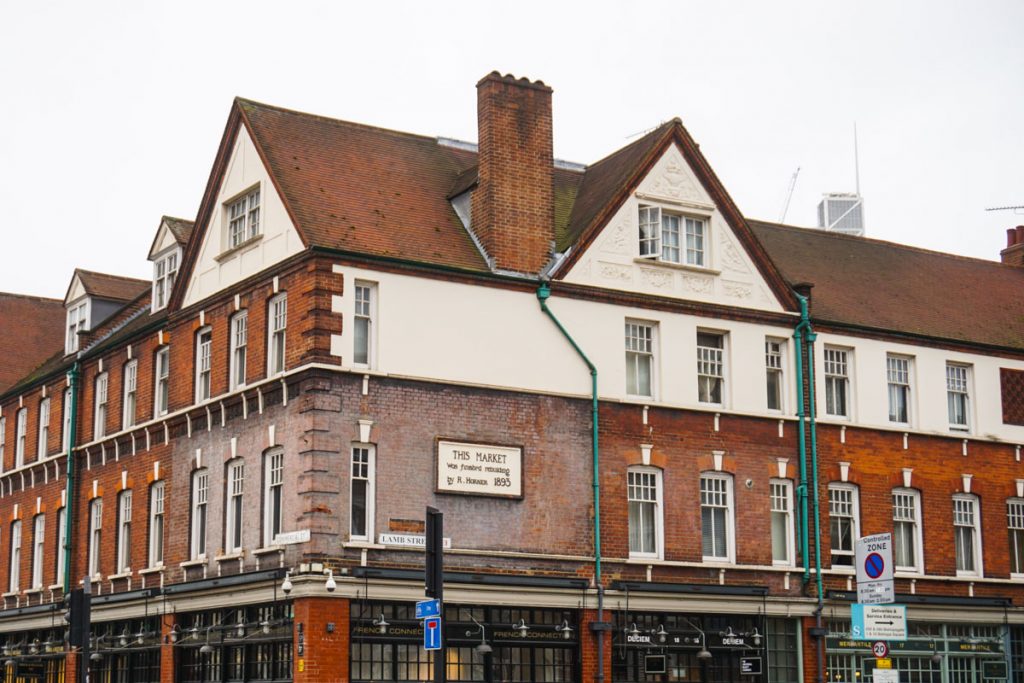
- First, travel insurance. Yes, I know this isn’t something that you pack. But it is stupid to leave home without it. An accident in a foreign country could very well bankrupt you, plus you’ll want to be covered in case of theft. I recommend buying travel insurance as far in advance as you can as it’s cheaper. I use World Nomads on every single backpacking trip I do, in Europe, Central America, Asia — anywhere. The contract is very clear as to what it covers, the prices are affordable, the excess/deductible is very low, and if you find yourself extending your trip it’s very easy to modify your insurance on the go.
- Mosquito repellent: Mosquitos in Europe in the summer are no freaking joke. They are relentless. Buy it before you travel as sometimes I’ve had trouble finding formulations that are as effective as what I can find at home.
- Reusable water bottle: The tap water in Europe is drinkable virtually everywhere with very few exceptions. I’ve drunk water from the tap from Spain to Czech Republic to Estonia to Albania and never gotten sick once. Unlike the US, it’s rare to be given tap water at restaurants and if you don’t carry a water bottle with you, you will spend a lot of money on bottled water (and waste a lot of plastic or glass, too). You don’t need a fancy one with a filter for Europe, but if it’ll keep you from using a jillion plastic water bottles, go for it. I like Klean Kanteen.
- Reusable tote bags: Many countries in Europe are phasing out plastic bags and charge you a decent amount to buy a plastic bag, as they should! Keep the surcharges away and the planet clean by saying no to plastic and using reusable bags.
- Basic medicine: You will be able to find all this in Europe, but trust me — you want to have the basics on hand in case you need them on the road. I carry Pepto-Bismol for standard stomach troubles, Imodium as a nuclear option (i.e. riding the bus when I am sick), some sort of painkiller like ibuprofen for headaches and minor pains, and some sort of motion sickness tablets. Travelers to Germany and Nordic countries may want to buy some sort of cough or cold medicine as they are really stingy with some of the ingredients over the counter in Northern Europe. That usually covers the bases for me — anything else I need I grab on the road.
What to Wear when Backpacking Europe
You don’t need travel clothes – your regular clothes will do. Trust me, you will get laughed at if you show up to travel around Europe’s capital cities in travel pants that zip off at the knee. Bring what you normally would wear in a city, plus some hiking gear if you plan to do some hiking. Here’s what I recommend for warm weather, assuming you travel in summer.
Shoes are the hardest part of deciding what to bring, as they take up the most space and don’t really always work for all seasons. I’ve compiled a list of my 9 absolute favorite travel shoes; definitely don’t bring all 9 (that’d be madness) but pick 2-4 depending on the length of your trip, the activities you’ll do, how big your bag is, and the climate.
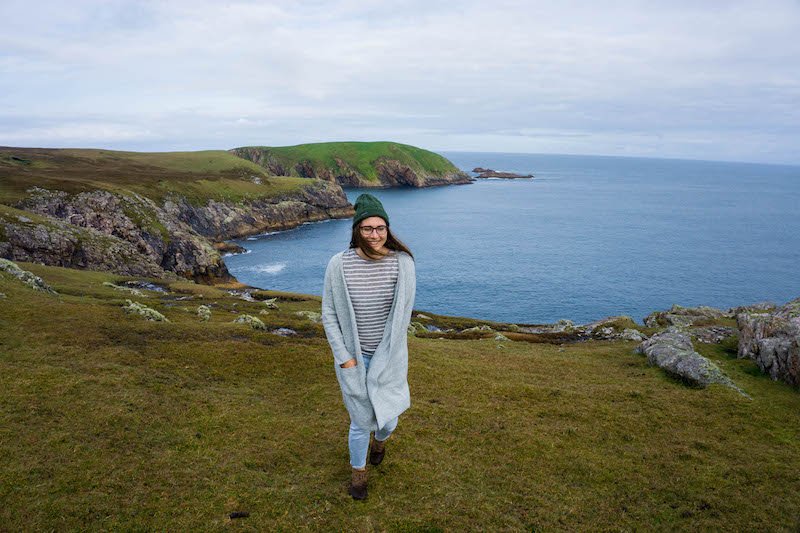
- 3-5 lightweight summer dresses: Or more if you can manage it. Dresses take so little space and easy to wear. Just pick fabrics that don’t wrinkle when rolled up. I really like maxi dresses for travel.
- 5+ tees & tanks: Neutral colors are best. European summers are hot so you will sweat a lot – avoid white. I suggest black, navy, and a few bright colors.
- 1 pair jeans: While it’s too hot many days to wear jeans, you will have the occasional rainy or cool day and be grateful for them. Again, pick a lightweight pair that roll up without taking up a lot of space.
- 2 pairs shorts: I bring one pair of poly-blend shorts and one pair of denim shorts.
- 1-2 skirts: I suggest bringing one black skirt and one printed skirt for maximum outfit flexibility. Personally, I loved having a midi-length skirt. Less fabric isn’t always best when it comes to avoiding the heat. The extra fabric around your legs will allow you to trap some cool air, making you feel less hot.
- 1 pair hiking boots (optional, but recommended if you plan on hiking): If you will do more than one or two hikes, I really do recommend bringing a pair of hiking boots. I love my Ahnu boots but if you have a pair at home already bring those so you don’t have to break them in. If you don’t want to hike much sneakers are fine.

Hiking boots came in handy hiking to 2500m in Bulgaria - 1 pair sneakers: For days when you spend a lot of time on your feet, but aren’t necessarily climbing mountains and traversing difficult ground, these will do the trick. I usually wear a pair of black Nikes as I find they look cute even with my dresses as they are pretty neutral.
- 1 pair sandals: Having a cute and comfortable pair of sandals is an absolutely essential on any backpacking Europe packing list. I’m obsessed with my Birkenstocks and will never go back to any other kind of sandal, most likely.
- 1 rain jacket: It rains more in the summer in Europe than you may think, so you’ll be happy you brought it. I love my Marmot rain jacket.
- 1 cardigan: Nights can get cool sometimes, plus sometimes they go little crazy with the air conditioning in malls, buses, trains, etc. in Europe. Definitely worth bringing.
- 1-2 bras: I trust you’re all big girls and you know what you need when it comes to bras. I personally brought 1 regular bra and 1 sports bra and switched between the two.
- 7+ pairs of underwear: The more underwear you bring, the longer you can go between needing to do laundry, obviously. I actually don’t recommend bringing stuff to do your laundry on the road – it’s a waste of time and money, plus are you seriously going to hang up your wet underwear in your hostel? (Please don’t.) Most hostels will have laundry available for you to do yourself or have them do it for you for a very reasonable amount.
- Bathing suit: If you think you’ll be doing any swimming, visiting the baths of Budapest, etc.
- Active clothing: Depending on if you’re going to be doing any outdoor adventures while you’re in Europe, you may want to bring specialty hiking clothing or climbing pants.
What to Pack for Staying in Hostels in Europe
Since you’re backpacking through Europe I’ll assume you’re staying in hostels but you may not need this stuff if you are staying at Airbnbs, Couchsurfing, using hotels, etc.
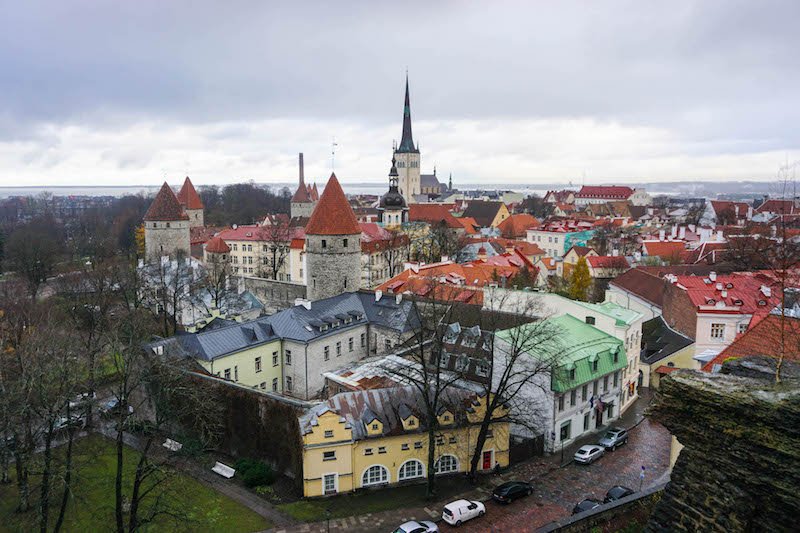
- 1 pair flip flops: Guys. Athlete’s foot is no joke, nor is it an urban legend. I’ve actually dealt with ringworm before (which is basically athlete’s foot on any part of your body that’s not your foot) and I can readily confirm that it is absolutely miserable to get rid of. Save yourself the trouble, trust me. Buy a pair of cheap rubber flipflops. /end PSA
- 1 travel towel: Many hostels don’t provide towels and will charge a surcharge to give you one to borrow. Not worth it. Bring your own to avoid rental fees, which add up quickly. This one is ultra-small and doesn’t take up much room in my bag.
- 1 eye mask: I swear by this contoured eye mask as it doesn’t put uncomfortable pressure on your eyes but completely blacks out any light. Great for inconsiderate roommates and early nights in when you’re beat but your bunkmates seem to think it’s a great time to hang out in the room talking at high volume with the lights on (can you tell I’m nearly 30?)
- Some earplugs or good noise-canceling headphones: I love Hearos — they’re the gold standard for ear plugs and are used by several professions that require the use of ear plugs! I’ve also been eyeing these noise-canceling headphones but haven’t made the plunge.
What Toiletries to Pack for Backpacking Europe
Again, you will likely be able to find all you need in any standard drug store like DM. But there are a few things I recommend adding to your Europe packing list

- Hand sanitizer: Some countries in Europe are better than others about having soap in the bathrooms. Keep hand sanitizer just in case.
- Kleenex packets: Like above — public restrooms may be lacking in the toilet paper department (especially at train stations, etc.) so having some Kleenex in a portable sleeve is always good as back-up.
- LUSH solid shampoo: Life-changing. Just trust me. Buy online or in store from LUSH and you’ll save serious money over Amazon.
- Sunscreen: My skin is really sensitive on my face, so I use this fancy Japanese sunscreen to prevent acne on my face. I buy a more standard sunscreen when I arrive at my destination but if you have a brand you like buy it at home as Europe’s options are more limited.
- Make Up: Whatever your favorite brand from home is. I’m a fan of Saie cosmetics – read this Saie Beauty review.
- Face wipes: Great for nights when you’re too lazy to take your make-up properly or for a quick face clean up on a sweaty, sunny day.
- Menstrual cup or your favorite tampon/pad brand: Again, if you have a specific brand allegiance, you may not find it in Europe. I switched to a Diva Cup for travel and have never looked back. I highly recommend it.
- Deodorant: I can’t rant enough about how much European deodorant sucks, plus I absolutely hate the smell of the aerosol dedorants that are so popular in Europe. Do yourself, everyone around you, and the planet a favor and buy some decent deodorant from home. I love Secret Clinical Strength and stash up on it every time I’m home, but then again, I am sweatier than most people are.
What to Pack for Safety in Europe
Europe is very safe, despite a recent uptick in random acts of terrorism. There’s no way to predict when or where this will happen, so I don’t even think about it. If it’s my day, it’s my day, and until then I will live a life free of fear. I do always make sure I have travel insurance (I use World Nomads) obviously but aside from that I just follow a few common sense safety precautions. These basics will keep your stuff safe in Europe.
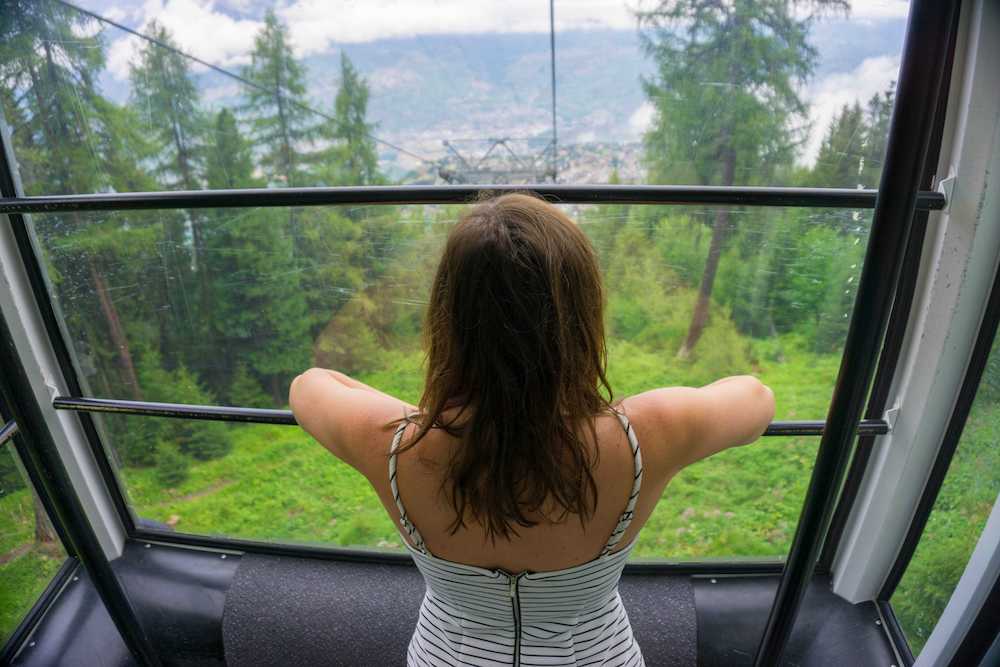
- Combination locks: In Europe, you’re probably at the greatest risk of theft from your fellow travelers. Prevent crimes of opportunity with simple measures like having a combination lock and keeping your valuables locked away. I always check hostels on Hostelworld to ensure they have lockers available because I travel with so many valuable electronic that it’d be idiotic to leave them unlocked.
- Daypack with locking zippers: Backpacks are easy targets — I wrote above about how much I love my PacSafe Citysafe backpack. After nearly being pickpocketing while wearing a backpack in Vietnam, I now only carry backpacks that have safety features like lockable zippers.
Don’t bother with a money belt. Thieves know about them. You’re better off carrying your wallet deep in a slash-proof backpack (like the one mentioned above) or a tightly zipped shoulder bag.
One important other thing I recommend is to have a second checking account and two debit cards if it’s at all possible. Keep them in different spots in case you get pickpocketed. This way you won’t be screwed while you wait for your bank to send you another card! This can also come in handy if one of your cards gets shut down for fraud. My debit card got duplicated at an ATM in Switzerland of all places and I had to wait a few weeks to get my card sent to me because I was moving around so much it was hard to coordinate with my bank. I was very glad I had another debit card with me during that time!
Electronics to Pack for Europe
There are really no special considerations when it comes to packing electronics for Europe. Bring whatever you’re comfortable bringing. As a travel blogger, I bring my entire life with me on the road, which includes a laptop, camera, multiple lenses, smartphone, GoPro, and more. I always make sure that I stay at hostels with lockers so that I can lock up my valuables. People who are more paranoid/responsible than I am may want to bring a portable safe for peace of mind.

- Laptop, if necessary: I bring my Macbook Air everywhere but other people may prefer a tablet or an inexpensive netbook. I work on the road so a user-friendly, lightweight laptop is a must.
- Kindle Paperwhite: Europe is usually pretty good with having English-language books available but I still love having my Kindle as I can buy basically any book in the world as long as I have WiFi. Plus it saves weight from your backpack.
- Travel camera: I use a Sony A6000 because it’s lightweight for a professional caliber camera, inexpensive, and a HUGE step up from a smartphone. You may want to replace this or add a GoPro too, especially good for adventure activities like rafting, diving, etc.
- Portable charger: You’ll use your phone battery more than you thought while on the road, trust me. Bring a portable charger to save yourself many headaches! Anker is a reliable brand and what I personally use.
- Adaptor, if necessary: The UK and continental Europe use different adaptors so either use one that has both or buy one of each before leaving to backpack Europe.
***
While this sounds like a lot, I was able to fit it everything on this backpacking Europe packing list into my 44L backpack and my daypack – mostly because I chose lightweight fabrics, used packing cubes, and packed carefully.
Is there anything I’ve forgotten? Is there anything else you’re wondering if you should bring? Let me know in the comments!
Allison Green is a former teacher who has been travel blogging since 2016. She has a Masters in Teaching and a B.A. in English and Creative Writing. Her blog posts merge her background as an educator with her experience traveling to 70+ countries to encourage ethical, meaningful travel. She has been a speaker at the World Travel Writers Conference and her writing, photography, and podcasting work has appeared in National Geographic, CNN Arabic, CBC Canada, and Forbes, amongst others. Now a full-time traveler, she has lived in Prague, Sofia, New York City, and the San Francisco Bay Area.

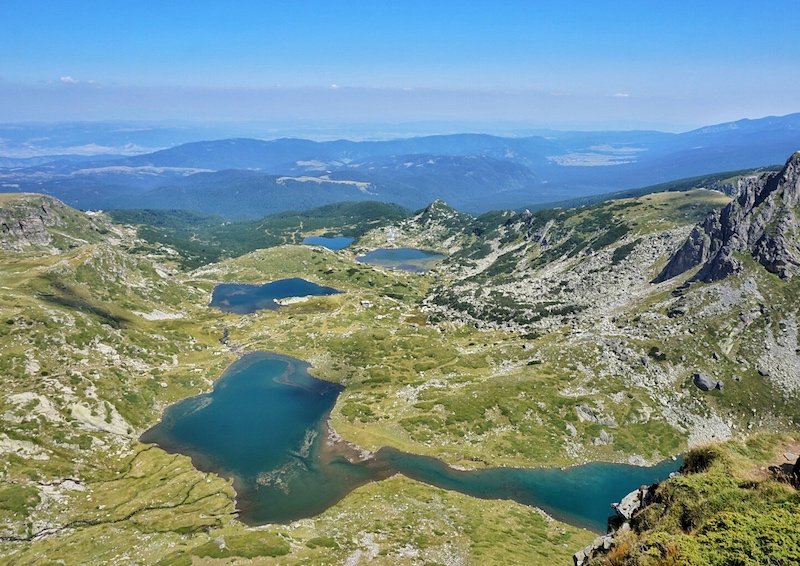
This is so so helpful! Especially the travel insurance, which in my excitement about my trip, I seem to have completely forgotten about. Thank you so much!
You’re welcome Bridgette! Have an amazing adventure!
I’d love to see a packing video. It boggles my mind that you’re able to fit all of that into a 45L backpack!
I should make a packing video next time I go on a big trip! It’s a surprisingly roomy set of backpacks but yes, it all fits (note that there is some overflow into my day bag as well)! The main thing is choosing the right fabrics and wearing the heaviest pieces (boots) on the plane.
That is ALOT of clothing. I am in Europe for 5 weeks and don’t have 5+ tees and 4 dresses! How did you get all that in your tortuga?!
I choose lightweight fabrics! My stuff rolls up really thin in packing cubes. I’m a size S or M in dresses and I pick fabrics like cotton blends that roll up really well and then go in packing cubes. I really had no problem fitting everything — but the Tortuga is really big and can fit quite a lot! It can get a bit heavy though. If you choose thicker materials, you may have a harder time fitting all that. It’s up to you what you’re comfy with! But that worked well for me 🙂